The proper roofing system is supposed to provide your commercial building with the basic things like durability, energy efficiency, and cost of ownership. There are so many roofing solutions available that sometimes choosing one that best fits your needs might be daunting. This guide will walk you through the top commercial roofing systems with their benefits so you can make informed decisions for your building.
Built-up roofing (BUR)
Built-up roofing is one of the oldest, most dependable, and time-tested commercial roofing systems. It consists of several layers of bitumen, asphalt, or tar, which are alternated with reinforcing fabrics and finished with a layer of gravel or mineral cap sheets.
- Pros:
- Durability: The BUR systems are highly durable, with the ability to serve for as long as 20-30 years;
- Low maintenance: easy to repair with minimal maintenance requirements.
- Fire Resistance: Gravel top layer provides an excellent fire resistance.
- Cons:
- Heavy: BUR systems are heavier than the other two options, which may require additional structural support.
- Installation Time: This is a very labor-intensive and installation time-intensive process,
- Odor: The bitumen used in BUR can produce strong odors during the installation
Modified Bitumen Roofing
Modified bitumen roofing is essentially an evolution of the BUR, which provided an improved durability and flexibility to the same. It consists of asphalt combined with modifiers and reinforced with fiberglass or polyester.
- Pros:
- Temperate: Will not split and crack with expansion and contraction; hence, ideal for areas where there is considerable temperature change.
- Easy to Install: Can be installed in various methods such as torch-applied, cold-applied, or self-adhered.
- Durability: Has very good resistance to foot traffic and punctures.
- Cons:
- Cost: Generally higher than traditional BUR systems
- UV Protection: This extra coating is needed for protection against UV damage.
Single-Ply Membrane Roofing
Single-ply membrane roofing systems are made up of flexible sheets of synthetic polymer; thus, they are lightweight and easy to install. There are two common types: Thermoplastic Polyolefin (TPO) and Ethylene Propylene Diene Monomer (EPDM).
TPO:
- Pros:
- Energy Efficiency: A reflective surface helps in reducing energy costs.
- Durability: TPO products are resistant to punctures, chemicals, and UV radiation.
- Seam Strength: The heat-welded seams create a strong and watertight bond.
- Cons:
- Newer Product: Less data exists on long-term performance compared with EPDM.
- Installation Quality: The installation has to be of great quality to provide satisfactory seam welding.
EPDM:
- Pros:
- Long-Lasting: It can run 25-30 years long if well maintained.
- Flexibility: It is very flexible and flexible at low temperatures.
- Easy Repairs: It is straightforward to repair and maintain.
- Cons:
- Color Options: It comes in mainly black that absorbs a great deal of heat unless additional coatings are applied.
- Chemical Resistance: It is less resistant to certain chemicals as compared to TPO.
Metal Roofing
These metal roofing systems are made out of many metals, like steel, aluminum, and copper. They can offer a very long-lasting and durable solution for commercial buildings.
- Pros:
- Long lasting life: 40-60 years or more
- Durability: Very resistant to wind, fire, and impact damages
- Energy Efficiency: The reflective surfaces thus formed help in reducing cooling costs by a long way.
- Cons:
- Cost: Higher
- Noise: Noisy in case of rain or hale without insulation.
- Expansion and Contraction: Special fasteners might be necessary to allow for this thermal movement.
The right commercial roofing system will depend on several factors: the structure of your building, the climate, your budget, and special needs. Each system has several advantages and quite a number of possible drawbacks, so weighing these considerations ensures that everything is taken into account. Consultation with a professional roofing contractor can be very helpful in weighing these options and determining the most appropriate one for your commercial building.

